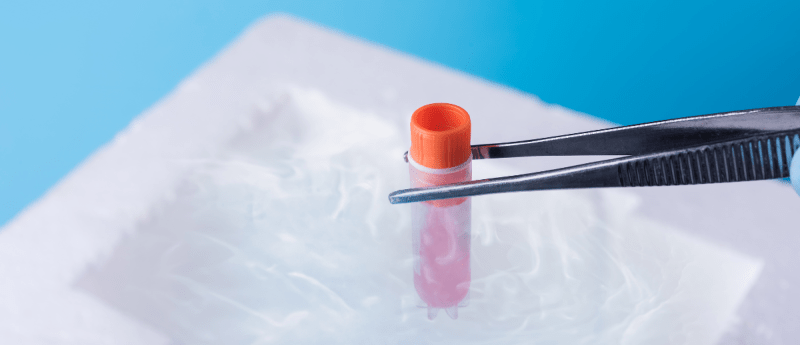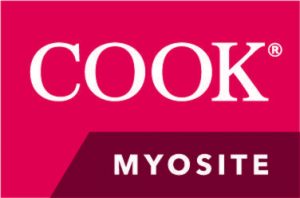Tailoring your cryopreservation protocols: an interview with Eva Schmelzer


Eva Schmelzer is a cell biologist who obtained her master’s in biology from the Georg-August-University Göttingen (Germany) and received her PhD in biology from the Technical University Braunschweig (Germany). After postdoctoral studies in cell biology at the University Leipzig (Germany), the University of North Carolina (NC, USA) and the German Cancer Research Center (Heidelberg, Germany) she worked for several years as a principal investigator focusing on regenerative medicine at the McGowan Institute for Regenerative Medicine, University of Pittsburgh (PA, USA). In 2021, she joined Cook MyoSite as an Analytical Method Development Scientist in research and development.
In this interview, we discuss the ins and outs of cryopreservation in cell therapeutics with Eva Schmelzer (Cook MyoSite, PA, USA). Drawing on her expertise as a cell biologist, Eva highlights the ways in which cryopreservation protocols can be tailored and optimized to suit the individual researchers needs. In addition to this, we hear about the greatest challenges and areas for improvement in the cryopreservation process, and their potential solutions.
Please introduce yourself and your company/institution.
My name is Eva Schmelzer and I work as an Analytical Method Development Scientist at Cook MyoSite (PA, USA). A major focus of my work is on research and development for our cell manufacturing. Cook Myosite is involved with both the clinical and research use only (RUO) production of human muscle-derived cells. For the isolation of our clinically utilized cells, Cook MyoSite isolates and expands autologous muscle-derived cells. Cook MyoSite autologous muscle-derived cell technology is currently under investigation in several clinical trials. Cook MyoSite’s RUO cells are primary human skeletal muscle cells isolated from the cadaveric muscle of donors, which are characterized by age, gender, race, body mass index and an abridged medical history, if available. Cook has an extensive library of cells from both healthy donors and donors with a range of medical, neuromuscular and other conditions. Our RUO division also offers media specially formulated for muscle cells to make cell culture growth, differentiation and cryopreservation as reliable as possible.
How important is cryopreservation to the field of regenerative medicine?
Cryopreservation is of critical importance. Whether you are in academia, industry or elsewhere, there is the need to store your cells for certain periods of time without significant loss of viability and performance. Commercial providers of cells rely on cryopreservation to store their collection of cells, allowing their customers to select from a wide range of cell types from different donors in stock.
For many clinical applications in regenerative medicine, cryopreservation of autologous, as well as allogeneic cells, is absolutely essential. This necessity arises from various needs; for example, applications often require the cells’ ex vivo expansion and/or manipulation, and must be safely stored until cells can be administered to the patient. Transportation is another factor; with clinical trials usually being conducted worldwide, cryopreservation allows the cells to be shipped over an extended period of time.
How is cryopreservation tailored for the cells Cook MyoSite uses?
Since the founding of Cook MyoSite 20 years ago, we have been aiming to optimize our procedures and medias for cell production and cryopreservation, with a special focus on supporting the in vitro expansion, differentiation and cryopreservation of primary human skeletal muscle cells. These efforts have enabled us to develop two different types of cryopreservation media. There is a cryopreservation media developed for in-house use only, which was specifically developed for our clinical trials to comply with strict regulations for advanced therapy medicinal products, as well as a cryopreservation medium for RUO cells (CR-9999), which we use internally for our research and development activities. We also offer this commercially to scientists working in the field of skeletal muscle cell research.
What are the greatest challenges/areas for improvement in the cryopreservation process?
Several aspects of cryopreservation can provide challenges. For instance, for the academic laboratory it is very often too time consuming and expensive to have the ideal conditions as established. Rate-controlled cooling devices can ascertain best-possible freezing conditions, and post-freeze recovery and viability, but might be too expensive to acquire. Likewise, a cryopreservation medium should be optimized in its composition to the specific cell type a scientist is working with, but constraints of time and budget might not allow for these activities. This is probably also one of the greatest areas of improvement in the cryopreservation process, especially with respect to primary cells, as most commercial developments have focused on less-sensitive cell types such as cell lines or immortalized cell types.
How does Cook MyoSite ensure an optimized process for cryopreservation?
At Cook MyoSite, we have devoted research activities to optimize cryopreservation. For example, in addition to optimizing the cryomedium composition, we are also investigating other factors that potentially can affect post-thaw recovery and viability, such as cell density. After CR-9999 is manufactured, it is tested for sterility, mycoplasma, pH, osmolality and endotoxin. It is also lot tested for its effect on post-thaw cellular viability and population doubling potential. Another aspect many might not pay to much attention to is post-cryopreservation thawing procedures, which we also aim to optimize by investigating various aspects such as temperature, hold-time and medium composition.
Do you see potential for automation/digitization in cryopreservation?
Absolutely: in particular, anyone who has to handle larger quantities of vials, needs traceability or 21 CFR part 11 and good manufacturing practice compliance will benefit greatly from more advanced, digitized systems. As companies evolve and grow, such as ours, these aspects will play an increasingly more important role. Manual cryopreservation is a time-consuming process, automation can help not only to free up time but could render the whole process more stream-lined and reduce contamination risks.
How do you see cryopreservation in regenerative medicine evolving in the next five years?
I think more cell type-specific cryopreservation media will be developed, because there is the strong need to have them tailored to different cell types. Moreover, for clinical applications in regenerative medicine, finding a substitute for animal-derived components that are typically included in cryopreservation media, such as fetal bovine serum or bovine serum albumin, would be a great benefit.
Disclaimer
The opinions expressed in this interview are those of the interviewee and do not necessarily reflect the views of RegMedNet or Future Science Group.
This article is part of the RegMedNet Spotlight on cryopreservation. Click here to view the full feature and discover expert insights on this >>>
In association with:
